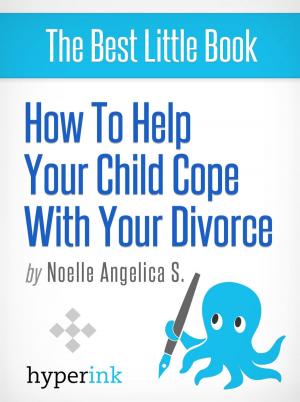Modern Lifestyles: Are You 40, Female, and Still Smoking? Here's How To Stop
Nonfiction, Health & Well Being, Health| Author: | Serge Uri | ISBN: | 9781614644446 |
| Publisher: | Hyperink | Publication: | July 30, 2012 |
| Imprint: | Hyperink | Language: | English |
| Author: | Serge Uri |
| ISBN: | 9781614644446 |
| Publisher: | Hyperink |
| Publication: | July 30, 2012 |
| Imprint: | Hyperink |
| Language: | English |
ABOUT THE BOOK
Women in their 40s are especially susceptible to cigarette smoking due to specific, age-related circumstances-stress and problems at work, children who have grown up and require less care, boredom from a routine and uneventful life-can all increase the probability that a 40ish woman might start smoking or continue smoking if she had started earlier.
Smoking addiction is caused mostly by nicotine intake during inhalation of tobacco smoke. Nicotine is considered to be the only substance in cigarettes that has psychoactive and addictive effects. In fact, although nicotine is not toxic or lethal, medical research states it is, in fact, a drug. Furthermore, the hundreds of toxic chemical compounds in cigarette smoke are also highly dangerous, especially for the lungs, heart and blood vessels.
Medical researchers have concluded that if a smoker quits, he or she dramatically reduces the probability of developing cardiovascular disease or cancer, although it may take years before the risks become low enough. This is why quitting as soon as possible is the best way to protect your health and reduce the risks. Smoking cessation is a difficult and challenging process that requires tremendous patience, will and mental effort. Fortunately, there are effective medical and psychological methods to help smooth along the cessation process.
MEET THE AUTHOR
Serge Uri is an experienced writer and a member of the Hyperink Team, which works hard to bring you high-quality, engaging, fun content. Happy reading!
EXCERPT FROM THE BOOK
Even though abrupt cessation of smoking can work, not all middle-aged women are able to successfully resist the temptation to smoke, especially when withdrawal symptoms such as restlessness, irritation and impaired mental concentration occur.
Nicotine replacement therapy involves gradually reducing the nicotine intake over a prolonged period of time to avoid the unpleasant withdrawal effects. Providing a steady, moderate nicotine supply through means other than the inhalation of toxic chemical compounds found in tobacco smoke is an effective way to gradually wean the person from smoking. Nicotine replacement therapy options include transdermal nicotine patches, nicotine gum, sprays, nicotine tablets and inhalers.
Nicotine reaches the brain and interacts with specific nicotine receptors causing stimulatory effects. However, with nicotine replacement therapy, the person is not exposed to dangerous amounts of carbon monoxide, tar and toxic substances. During nicotine replacement therapy, it is important to resist the temptation to smoke again. Even though the nicotine withdrawal effects are addressed in a gentle and safe manner with a steady nicotine supply through nicotine-delivering devices, women who want to quit smoking may still be vulnerable to the comforting ritual of smoking. Moreover, the nicotine intake through alternative routes is generally lower than the amount received through cigarette smoke, which can cause intense cravings for the "full benefit." It is best to talk to your doctor before choosing a particular nicotine-delivering device as part of your nicotine replacement therapy.
CHAPTER OUTLINE
Introduction
+ Why you should quit smoking
Smoking Cessation Methods
+ General Info
The Path to a Cigarette-Free Lifestyle
+ Tips and Tricks
Sources and Additional Reading
Modern Lifestyles: Are You 40, Female, and Still Smoking? Here's How To Stop
ABOUT THE BOOK
Women in their 40s are especially susceptible to cigarette smoking due to specific, age-related circumstances-stress and problems at work, children who have grown up and require less care, boredom from a routine and uneventful life-can all increase the probability that a 40ish woman might start smoking or continue smoking if she had started earlier.
Smoking addiction is caused mostly by nicotine intake during inhalation of tobacco smoke. Nicotine is considered to be the only substance in cigarettes that has psychoactive and addictive effects. In fact, although nicotine is not toxic or lethal, medical research states it is, in fact, a drug. Furthermore, the hundreds of toxic chemical compounds in cigarette smoke are also highly dangerous, especially for the lungs, heart and blood vessels.
Medical researchers have concluded that if a smoker quits, he or she dramatically reduces the probability of developing cardiovascular disease or cancer, although it may take years before the risks become low enough. This is why quitting as soon as possible is the best way to protect your health and reduce the risks. Smoking cessation is a difficult and challenging process that requires tremendous patience, will and mental effort. Fortunately, there are effective medical and psychological methods to help smooth along the cessation process.
MEET THE AUTHOR
Serge Uri is an experienced writer and a member of the Hyperink Team, which works hard to bring you high-quality, engaging, fun content. Happy reading!
EXCERPT FROM THE BOOK
Even though abrupt cessation of smoking can work, not all middle-aged women are able to successfully resist the temptation to smoke, especially when withdrawal symptoms such as restlessness, irritation and impaired mental concentration occur.
Nicotine replacement therapy involves gradually reducing the nicotine intake over a prolonged period of time to avoid the unpleasant withdrawal effects. Providing a steady, moderate nicotine supply through means other than the inhalation of toxic chemical compounds found in tobacco smoke is an effective way to gradually wean the person from smoking. Nicotine replacement therapy options include transdermal nicotine patches, nicotine gum, sprays, nicotine tablets and inhalers.
Nicotine reaches the brain and interacts with specific nicotine receptors causing stimulatory effects. However, with nicotine replacement therapy, the person is not exposed to dangerous amounts of carbon monoxide, tar and toxic substances. During nicotine replacement therapy, it is important to resist the temptation to smoke again. Even though the nicotine withdrawal effects are addressed in a gentle and safe manner with a steady nicotine supply through nicotine-delivering devices, women who want to quit smoking may still be vulnerable to the comforting ritual of smoking. Moreover, the nicotine intake through alternative routes is generally lower than the amount received through cigarette smoke, which can cause intense cravings for the "full benefit." It is best to talk to your doctor before choosing a particular nicotine-delivering device as part of your nicotine replacement therapy.
CHAPTER OUTLINE
Introduction
+ Why you should quit smoking
Smoking Cessation Methods
+ General Info
The Path to a Cigarette-Free Lifestyle
+ Tips and Tricks
Sources and Additional Reading
Modern Lifestyles: Are You 40, Female, and Still Smoking? Here's How To Stop















